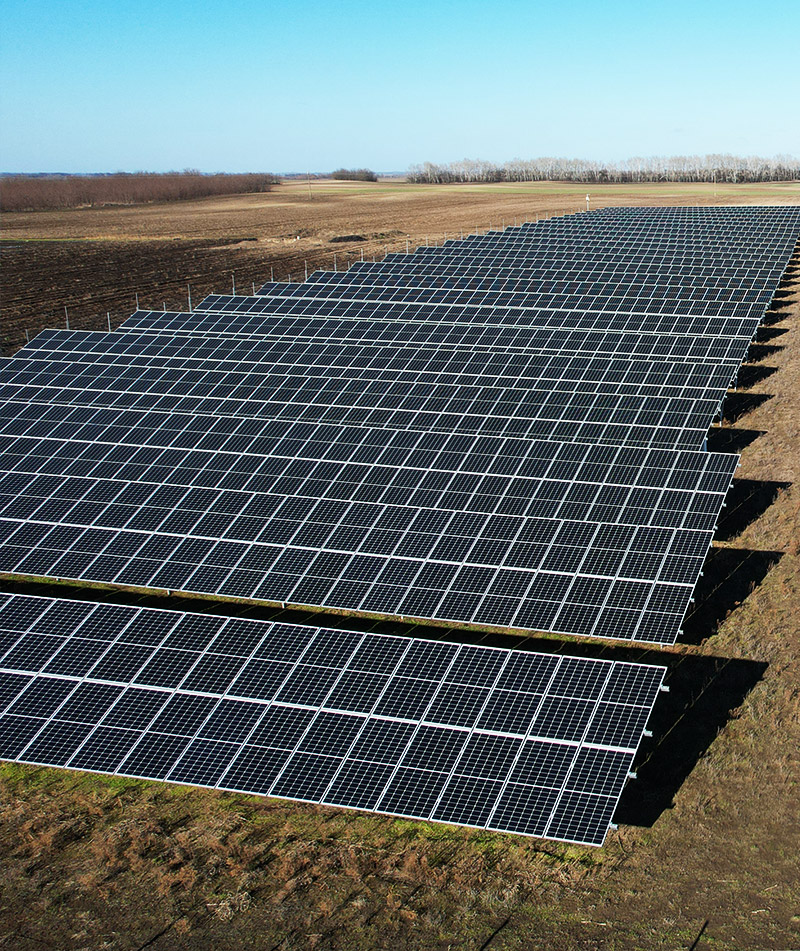PV power plants in open areas
Open-air photovoltaic power plants are an efficient way of using renewable energy sources. These projects can help reduce fossil fuel consumption while providing lower cost benefits to energy consumers.
Brownfield PV plants are types of PV plants that are built on existing industrial brownfield sites. Brownfield sites are areas that have been contaminated by industrial activities in the past but which are now available for use. Brownfield PV plants are able to serve as an alternative to building PV plants on greenfield sites, an area that has not yet been exposed to industrial activities.
The advantages of brownfield PV plants are:
- Reduced environmental impact: brownfield PV plants are able to use existing unused industrial brownfield sites, which means that new greenfield land does not need to be created. This can reduce the environmental impact.
- Maximum utilisation: brownfield PV plants are able to use existing infrastructure, meaning less new equipment is needed to make a PV plant operational.
- Lower costs: brownfield PV plants are able to use existing equipment, reducing construction and maintenance costs.
The disadvantages of brownfield PV plants are:
- Higher pollution removal costs: brownfield PV plants are built on sites that have been polluted by industrial activities in the past. This means that pollution removal costs may be necessary.
- Pollution risk: Brownfield PV plants may be susceptible to pollution from nearby pollution sources such as industrial waste, water and air pollution.
- Higher investment costs: as brownfield PV plants are built on sites that have been polluted by industrial activities in the past, the cost of construction and maintenance can be higher than for greenfield PV plants.




